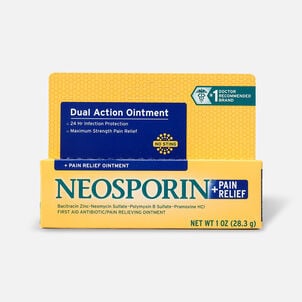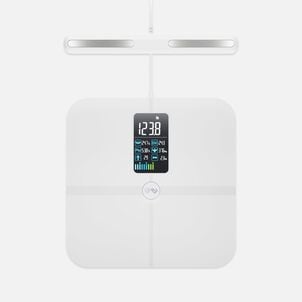Your child's well-being is your top priority, and it's normal to worry about changes in their health. A higher temperature is a common issue and may not signal a severe problem. But you will want the ability to monitor your child's temperature with a reliable thermometer from home, especially with the lingering threat of COVID-19. Our guide covers how to find the best thermometer for your family — during the coronavirus pandemic — and beyond.
How to choose the right thermometer
In 2020, thermometer shortages made it challenging for families to screen each other for fever, one of the symptoms of COVID-19. To increase supply, the U.S. Food and Drug Administration (FDA) temporarily relaxed its thermometer regulations. While more supply is a good thing, it may be tougher for families to compare options. Here are some factors to consider before picking a thermometer for your family.
- Accuracy - If you think your child may have a fever, you will need a reliable thermometer for accurate readings until they feel better.
- Age restrictions - Thermometers aren't a one-size-fits-all device. Some thermometers may be more suitable than others, depending on your child's age.
- Ease of use - If your thermometer is hard to use, it may be more challenging to get an accurate temperature reading. You will also want to pay attention to speed, especially when dealing with an infant or toddler's readings.
- Price - You will notice a range of prices depending on the type of thermometer you want. Luckily, you can save money by purchasing a thermometer with pre-tax money using your flexible spending account (FSA) or health savings account (HSA).
Types of thermometers: what's the difference?
Most thermometers fall into two categories: contact or contact-free. Contact thermometers touch the body to take your temperature, whereas contact-free thermometers can get a temperature reading without touching the skin. Here's a closer look at the most common types of contact and contact-free thermometers from the Mayo Clinic.
Contact thermometers - Contact thermometers use electronic heat sensors to measure temperatures by armpit, forehead, mouth, or rectum. If you have an infant or children under three, contact thermometers may offer the most accurate temperatures, but oral or rectal readings can be trickier. These thermometers are suitable for all ages, though.
Infrared Forehead Thermometers/Temporal artery thermometers - These contactless thermometers use an infrared scanner to measure your forehead temperature quickly. While they are suitable for any age, temporal artery thermometers tend to be more expensive and less accurate than other types.
Tympanic thermometers - Another contactless thermometer, these use an infrared ray in the ear canal. Although these are quick and comfortable, earwax or small curved ear canals may make tympanic thermometers less accurate, and they aren't suitable for newborns.
The best thermometer picks for your family
With thousands of options and many popular choices out of stock, finding the right thermometer can feel impossible. Luckily, we have compared some of the top reviewed options, including features, pricing, and more. These are some of the best thermometer options, depending on your family's needs.
Best Budget Oral / Rectal Thermometer: Mabit Digital Thermometer
The Mabis Digital Thermometer is an affordable pick for all ages, offering 60-second oral, rectal, and underarm readings for a tone for peak temperatures and fever alarm above 99.5° F. The device also features a memory recall and automatic shutoff to conserve the battery.
"Much faster than a conventional thermometer. Accurate per my calibration with a high-end thermometer," says verified buyer James M.
Best Ear Thermometer: Caring Mill Instant Ear Thermometer
The Caring Mill Instant Ear Thermometer offers a one-second reading with an LCD display screen. You can store up to 20 readings, and there is a color-coded alert and beeping alarm when a temperature exceeds 99.5° F. Caring Mill also donates a portion of every sale to Children's Health Fund, a non-profit dedicated to healthcare for underserved children in the United States.
"I love the size and how easy it is to use and read," writes verified buyer Lisa W.
Best Forehead Thermometer: Sejoy Infrared Forehead Thermometer
The Sejoy Infrared Forehead Thermometer is a no-fuss, contactless option for all ages, with temperature readings in only three seconds. The device uses infrared technology for more accurate temperatures and allows you to store up to ten readings.
"Works great, easy to use, and reading comes back in a few seconds," says verified buyer James K.
What temperature is considered a fever?
Although children may get warm from playing, crying, or getting out of a warm bed, their elevated temperature shouldn't last longer than 20 minutes. According to Seattle Children's Hospital, about 80% of children who feel warmer or act sick may have a fever. The best way to know for sure is by taking their temperature, and the following cutoffs may signal a fever:
- Armpit temperature: 99° F or higher
- Mouth temperature: 100° F or higher
- Ear, forehead, or rectal temperature: 100.4° F or higher
While your child's fever may feel like a health emergency, it may not be the major issue you expect. Here's how to tell the difference between an illness to monitor vs. when you need to call the doctor.
When to stay vigilant
While a low-grade fever can be troubling, it isn't necessarily a major concern. According to the Cleveland Clinic, even temperatures up to 102.5° F (three months to three-years-old) or up to 103° F (three-years-old and older) isn't particularly troubling. And fevers lasting less than five days may not be a problem if your child is still eating, drinking, and playing as usual.
When to call the doctor
Although you may not need a medical professional for the scenarios above, the Clinic says there are some scenarios when you will need to call the doctor:
- Fever for infants under three months
- Fevers lasting more than five days
- Fevers above 104° F
- Fevers that won't come down with fever reducers
- Difficulty waking up or not drinking enough liquids
- Temperature above 102° F for more than 48 hours after a vaccine
Be prepared with a thermometer
Whether you're monitoring your child's temperature for a cold, the flu, COVID-19, or another illness, a reliable thermometer is a must-have for every parent's medicine cabinet. While thermometers may vary in cost, you can save money by using your flexible spending account (FSA) to buy one.
As a reminder, these funds go into your FSA before taxes, so spending the money on qualified expenses is a wallet-friendly move. If you still have leftover FSA funds from last year, a thermometer may be a handy purchase to get you through flu season, the pandemic, and your family's future needs.
-
Thanks for visiting the FSA Learning Center! To stay on top of all FSA news that can affect your health and financial wellness, be sure to follow us on Facebook and Twitter.
Kate Dore
Kate Dore is a Nashville-based personal finance writer and Candidate for Certified Financial Planner™ Certification. She teaches financial literacy with Junior Achievement and writes for Lifehacker, Business Insider, Investopedia, and Credit Karma. You can follow her on Twitter at @KateDore.



























